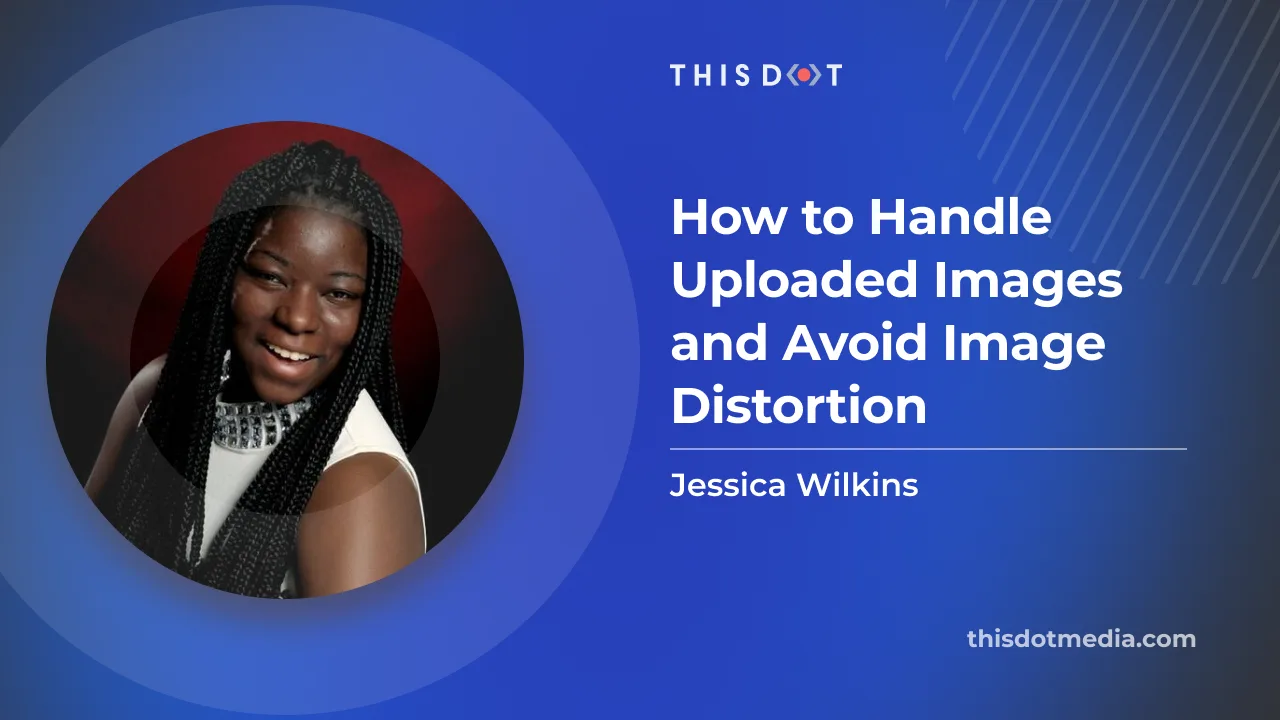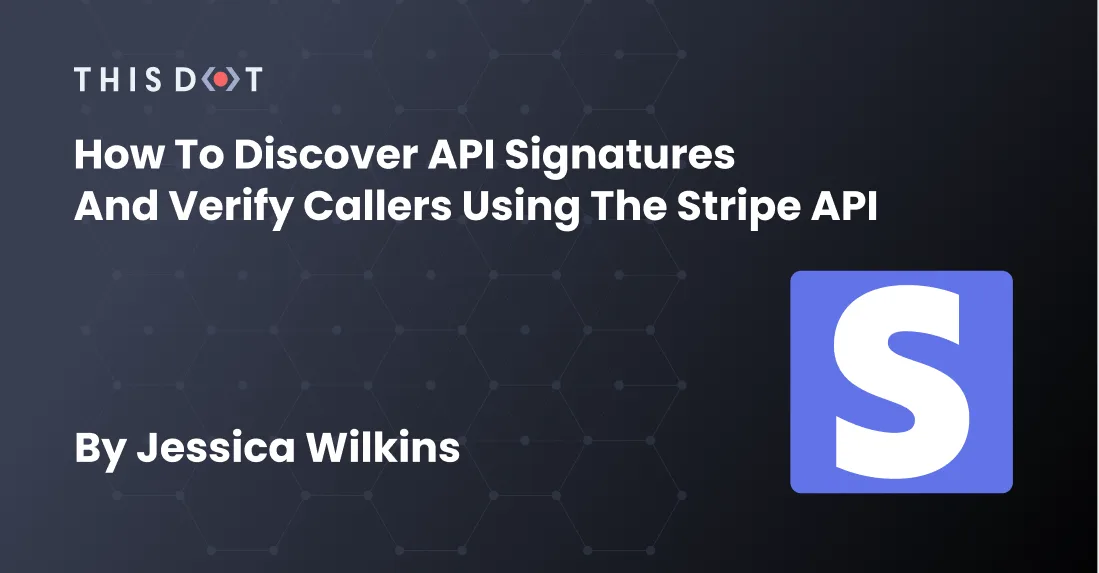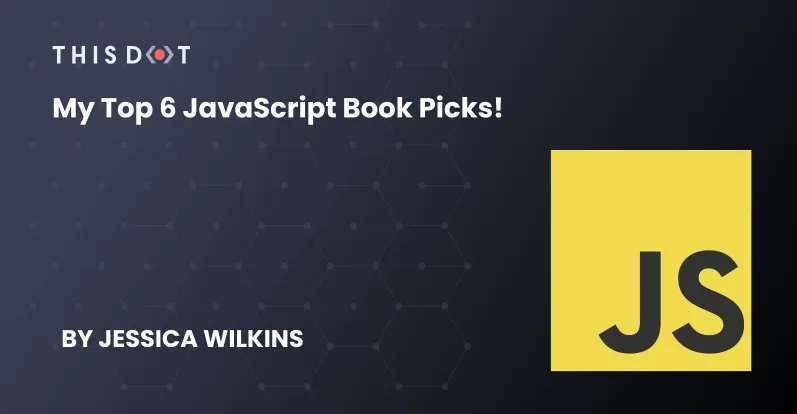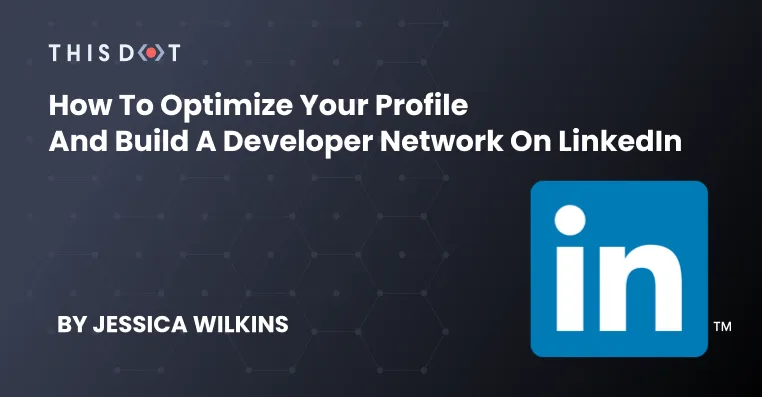Developer Insights
Join millions of viewers! Our engineers craft human-written articles solving real-world problems weekly. Enjoy fresh technical content and numerous interviews featuring modern web advancements with industry leaders and open-source authors.

How to Handle Uploaded Images and Avoid Image Distortion
When you are working with images in your application, you might run into issues where the image's aspect ratio is different from the container's specified width and height. This could lead to images looking stretched and distorted. In this article, we will take a look at how to solve this problem by using the object-fit CSS property. A Look Into the Issue Using the "Let's Chat With" App Let's Chat With is an open source application that facilitates networking between attendees for virtual and in-person conferences. When users sign up for the app, they can join a conference and create a new profile with their name, image, and bio. When the team at This Dot Labs was testing the application, they noticed that some of the profile images were coming out distorted. The original uploaded source image did not have an aspect ratio of 1:1. A 1:1 aspect ratio refers to an image's width and height being the same. Since the image was not a square, it was not fitting well within the dimensions below. ` In order to fix this problem, the team decided to use the object-fit CSS property. What is the object-fit CSS property? The object-fit property is used to determine how an image or video should resize in order to fit inside its container. There are 5 main values you can use with the object-fit property. - object-fit: contain; - resizes the content to fit inside the container without cropping it - object-fit: cover; - ensures the all of the content covers the container and will crop if necessary - object-fit: fill; - fills the container with the content by stretching it and ignoring the aspect ratio. This could lead to image distortion. - object-fit: none; - does not resize the content which could lead to the content spilling out of the container - object-fit: scale-down; - scales larger content down to fit inside the container When the object-fit: cover; property was applied to the profile image in Let's Chat With, the image was no longer distorted. ` When Should You Consider Using the object-fit Property? There will be times where you will not be able to upload different sized images to fit different containers. You might be in a situation like Let's Chat With, where the user is uploading images to your application. In that case, you will need to apply a solution to ensure that the content appropriately resizes within the container without becoming distorted. Conclusion In this article, we learned about how to fix distorted uploaded images using the object-fit property. We examined the bug inside the Let's Chat With application and how that bug was solved using object-fit: cover;. We also talked about when you should consider using the object-fit property. If you want to check out the Let's Chat with app, you can signup here. If you are interested in contributing to the app, you can check out the GitHub repository....
Jul 28, 2023
3 mins

Introducing the New Serverless, GraphQL, Apollo Server, and Contentful Starter kit
Introducing the new Serverless, GraphQL, Apollo Server, and Contentful Starter kit The team at This Dot Labs has released a brand new starter kit which includes the Serverless Framework, GraphQL, Apollo Server and Contentful configured and ready to go. This article will walk through how to set up the new kit, the key technologies used, and reasons why you would consider using this kit. Table of Contents - How to get started setting up the kit - Generate the project - Setup Contentful access - Setting up Docker - Starting the local server - How to Create the Technology Model in Contentful - How to seed the database with demo data - How to work with the migration scripts - Technologies included in this starter kit - Why use GraphQL? - Why use Contentful? - Why use Amazon Simple Queue Service (SQS)? - Why use Apollo Server? - Why use the Serverless Framework? - Why use Redis? - Why use the Jest testing framework? - Project structure - How to deploy your application - What can this starter kit be used for? - Conclusion How to get started setting up the kit Generate the project In the command line, you will need to start the starter.dev CLI by running the npx @this-dot/create-starter command. You can then select the Serverless Framework, Apollo Server, and Contentful CMS kit and name your new project. Then you will need to cd into your new project directory and install the dependencies using the tool of your choice (npm, yarn, or pnpm). Next, you will need to Run cp .env.example .env to copy the contents of the .env.example file into the .env file. Setup Contentful access You will first need to create an account on Contentful, if you don't have one already. Once you are logged in, you will need to create a new space. From there, go to Settings -> API keys and click on the Content Management Tokens tab. Next, click on the Generate personal token button and give your token a name. Copy your new Personal Access Token, and add it to the CONTENTFUL_CONTENT_MANAGEMENT_API_TOKEN variable. Then, go to Settings -> General settings to get the CONTENTFUL_SPACE_ID. The last step is to add those CONTENTFUL_CONTENT_MANAGEMENT_API_TOKEN and CONTENTFUL_SPACE_ID values to your .env file. Setting up Docker You will first need to install Docker Desktop if you don't have it installed already. Once installed, you can start up the Docker container with the npm run infrastructure:up command. Starting the local server While the Docker container is running, open up a new tab in the terminal and run npm run dev to start the development server. Open your browser to http://localhost:3000/dev/graphql to open up Apollo server. How to Create the Technology Model in Contentful To get started with the example model, you will first need to create the model in Contentful. 1. Log into your Contentful account 2. Click on the Content Model tab 3. Click on the Design your Content Modal button if this is your first modal 4. Create a new model called Technology 5. Add three new text fields called displayName, description and url 6. Save your new model How to seed the database with demo data This starter kit comes with a seeding script that pre-populates data for the Technology Content type. In the command line, run npm run db:seed which will add three new data entries into Contentful. If you want to see the results from seeding the database, you can execute a small GraphQL query using Apollo server. First, make sure Docker, and the local server(npm run dev) are running, and then navigate to http://localhost:3000/dev/graphql. Add the following query: ` When you run the query, you should see the following output. ` How to work with the migration scripts Migrations are a way to make changes to your content models and entries. This starter kit comes with a couple of migration scripts that you can study and run to make changes to the demo Technology model. These migration scripts are located in the scripts/migration directory. To get started, you will need to first install the contentful-cli. ` You can then login to Contentful using the contentful-cli. ` You will then need to choose the Contentful space where the Technology model is located. ` If you want to modify the existing demo content type, you can run the second migration script from the starter kit. ` If you want to build out more content models using the CLI, you can study the example code in the /scripts/migrations/01-create-technology-contentType.js file. From there, you can create a new migration file, and run the above contentful space migration command. If you want to learn more about migration in Contentful, then please check out the documentation. Technologies included in this starter kit Why use GraphQL? GraphQL is a query language for your API and it makes it easy to query all of the data you need in a single request. This starter kit uses GraphQL to query the data from our Contentful space. Why use Contentful? Contentful is a headless CMS that makes it easy to create and manage structured data. We have integrated Contentful into this starter kit to make it easy for you to create new entries in the database. Why use Amazon Simple Queue Service (SQS)? Amazon Simple Queue Service (SQS) is a queuing service that allows you to decouple your components and process and store messages in a scalable way. In this starter kit, an SQS message is sent by the APIGatewayProxyHandler using the sendMessage function, which is then stored in a queue called DemoJobQueue. The SQS handler sqs-handler polls this queue, and processes any message received. ` Why use Apollo Server? Apollo Server is a production-ready GraphQL server that works with any GraphQL client, and data source. When you run npm run dev and open the browser to http://localhost:3000/dev/graphql, you will be able to start querying your Contentful data in no time. Why use the Serverless Framework? The Serverless Framework is used to help auto-scale your application by using AWS Lambda functions. In the starter kit, you will find a serverless.yml file, which acts as a configuration for the CLI and allows you to deploy your code to your chosen provider. This starter kit also includes the following plugins: - serverless-offline - allows us to deploy our application locally to speed up development cycles. - serverless-plugin-typescript - allows the use of TypeScript with zero-config. - serverless-dotenv-plugin - preloads function environment variables into the Serverless Framework. Why use Redis? Redis is an open-source in-memory data store that stores data in the server memory. This starter kit uses Redis to cache the data to reduce the API response times and rate limiting. When you make a new request, those new requests will be retrieved from the Redis cache. Why use the Jest testing framework? Jest is a popular testing framework that works well for creating unit tests. You can see some example test files under the src/schema/technology directory. You can use the npm run test command to run all of the tests. Project structure Inside the src directory, you will find the following structure: ` This given structure makes it easy to find all of the code and tests related to that specific component. This structure also follows the single responsibility principle which means that each file has a single purpose. How to deploy your application The Serverless Framework needs access to your cloud provider account so that it can create and manage resources on your behalf. You can follow the guide to get started. Steps to get started: 1. Sign up for an AWS account 2. Create an IAM User and Access Key 3. Export your AWS_ACCESS_KEY_ID & AWS_SECRET_ACCESS_KEY credentials. ` 4. Deploy your application on AWS Lambda: ` 5. To deploy a single function, run: ` To stop your Serverless application, run: ` For more information on Serverless deployment, check out this article. What can this starter kit be used for? This starter kit is very versatile, and can be used with a front-end application for a variety of situations. Here are some examples: - personal developer blog - small e-commerce application Conclusion In this article, we looked at how we can get started using the Serverless, GraphQL, Apollo Server, and Contentful Starter kit. We also looked at the different technologies used in the kit, and why they were chosen. Lastly, we looked at how to deploy our application using AWS. I hope you enjoy working with our new starter kit!...
Jun 2, 2023
7 mins

How to Resolve Nested Queries in Apollo Server
When working with relational data there will be times when you will need to access information within nested queries. But how would this work within the context of Apollo Server?...
May 17, 2023
6 mins

Introducing the Next.js 12 and Chakra UI Starter Kit
Next.js is a very popularly used React framework, and to help support developers using Next, This Dot Labs has just created a new starter kit that they can use to bootstrap their next projects. This Next.js 12 starter kit comes with formatting, linting, example components, unit testing and styling with Chakra UI. In this article, we will take a deeper look into what this kit has to offer. Table of Contents - How to initialize a new project - Technologies and tools included with the kit - Next.js v.12 - Chakra UI - Jest - Storybook - ESLint and Prettier - A note about state management - Deployment options - Reasons for using this kit - Conclusion How to initialize a new project 1. Run npm create @this-dot/starter -- --kit next12-chakra-ui or yarn create @this-dot/starter --kit next12-chakra-ui 2. Follow the prompts to select the next12-chakra-ui starter kit, and name your new project. 3. cd into your project directory and run npm install or yarn install . 4. Run npm run dev or yarn run dev to start the development server. 5. Open your browser to http://localhost:3000 to see the included example code running. Technologies and tools included with the kit Next.js v.12 This starter kit uses version 12 of Next.js with the TypeScript configuration. We have also included an example inside the src/pages/api/hello.ts file on how to work with the built-in types for API routes. ` Chakra UI This starter kit uses Chakra UI for all of the styling. We have already setup the ChakraProvider inside the src/pages/_app.tsx file, which includes extended theme objects for colors, font weights, and breakpoints that you can customize to your liking. ` You can take a look at any of the example components inside of the src/components folder on how to best use Chakra's components. Jest This starter kit uses the Jest testing framework for its unit tests. The unit tests for the home page can be found in the tests directory. ` Storybook This starter kit comes with Storybook so you can test out your UI components in isolation. We have also included the @storybook/addon-a11y addon, which is used to check for common accessibility errors in your components. When you run Storybook, each story will show detailed explanations with suggested fixes if errors are found. Examples of stories can be found in the components directory. ESLint and Prettier This start kit uses ESLint for linting and Prettier for formatting. All of the configurations have been setup for you so you can get to building out your project faster. A note about state management This starter kit does not use a global state management library. Instead we are managing state within the routing system. For examples, please look at the /src/pages/counter-example.tsx and src/pages/fetch-example.tsx files. Deployment options You can use services like Netlify or Vercel to deploy your application. Both of these services will come with a built-in CI/CD pipeline and live previews. Reasons for using this kit Next.js is a versatile framework, and can be used for a variety of situations. Here are some examples of what you can use our starter kit for. - personal blog - e commerce application - user dashboard application - MVP (Minimum Viable Product) Conclusion Next.js has a lot to offer, and this new starter kit will help you bootstrap your next project. Study the example components to learn about best practices with Next.js and Chakra UI. Get started building out new features for your project with our new starter kit!...
Apr 3, 2023
3 mins

How to Discover API Signatures and Verify Callers Using the Stripe API
When you are working with sensitive data like customer payment information, you will want to ensure that the data you are receiving from the backend is authentic. API signature verification will check for authenticity....
Dec 2, 2022
3 mins

framework.dev: A Community-Led Open Source Project Welcoming to All Developers
framework.dev is way more than just another resource list because it is a place to learn, grow, connect and be inspired....
Nov 11, 2022
4 mins

What is a Monorepo and What Are the Advantages for Using It in Your Project?
Monorepos are very popular in the tech industry, and many large companies like Microsoft and Google use them. But what exactly is a monorepo and would it work for your project?...
Sep 23, 2022
6 mins

My Top 6 JavaScript Book Picks!
There is a lot of great content out there to help you understand JavaScript better. But sometimes it is hard to know which resources to look into and invest your time in....
Aug 11, 2022
4 mins

What is Accessibility and Why It Matters
Billions of people around the world use various web applications in their everyday lives. As web developers, we strive to build strong websites that can be used and enjoyed by everyone. But what is accessibility and why should we care about it?...
Jul 21, 2022
3 mins

How to Avoid Common Pitfalls and Ace Your Take Home Assignment
During the interview process, you might be asked to complete a short take home assignment consisting of building out a small project with required tasks. But what is the best way to approach a take home assignment?...
Jul 20, 2022
6 mins

How to Write a Strong Resume That Will Be Read by Hiring Managers and Recruiters
Applying for software jobs can be stressful and time consuming. One of most stressful components is writing a resume. A lot of people struggle to write strong resumes and end up paying the price by getting passed over for tech interviews....
Jul 15, 2022
7 mins

How to Optimize Your Profile and Build a Developer Network on LinkedIn
LinkedIn is a platform designed for professionals to connect with recruiters and potential employers. If you invest the time to build a strong developer profile it can lead to potential job opportunities....
Jul 5, 2022
8 mins
Let's innovate together!
We're ready to be your trusted technical partners in your digital innovation journey.
Whether it's modernization or custom software solutions, our team of experts can guide you through best practices and how to build scalable, performant software that lasts.